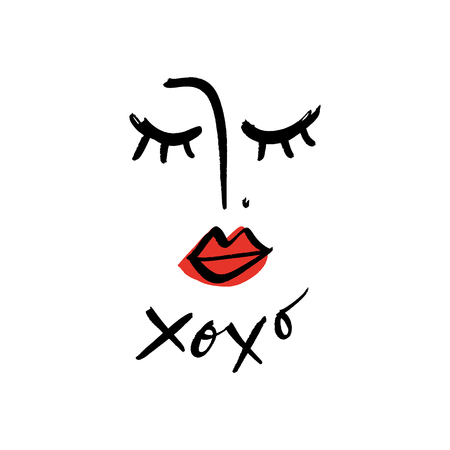1. What Is Clean Beauty, Really?
In recent years, the term “clean beauty” has become a buzzword in the U.S. skincare and cosmetics industry. But what does it really mean when a product is labeled as “clean”? The answer isnt as straightforward as you might think. The concept of clean beauty has evolved over time and can vary widely depending on who you ask—consumers, brands, or regulatory agencies.
The Origins of Clean Beauty
The clean beauty movement started gaining traction in the early 2000s, fueled by growing concerns about potentially harmful ingredients in personal care products. Consumers began seeking out alternatives that were not only effective but also safer for their health and the environment. This demand pushed indie beauty brands to take a stand against synthetic chemicals, harsh preservatives, and controversial ingredients like parabens and sulfates.
Why It Matters
As awareness grew around ingredient safety, so did the desire for transparency. Shoppers wanted to understand what was in their products—and why those ingredients were used. This shift marked a turning point where “natural” and “organic” labels were no longer enough. People began to look deeper into the science behind formulations and started asking tough questions about what “safe” really means.
Different Interpretations of Clean
One of the biggest challenges with clean beauty is that there’s no universal definition. Heres how different groups define it:
| Group | Definition of Clean |
|---|---|
| Consumers | Products free from toxic or harmful ingredients; often expect cruelty-free and eco-friendly packaging too. |
| Brands | Each brand sets its own standards—some focus on avoiding synthetic ingredients, while others emphasize sustainable sourcing. |
| Regulatory Bodies (like FDA) | No official definition; regulations are limited compared to other countries. Brands are largely responsible for ensuring product safety. |
The Role of Marketing
Without clear guidelines, many companies use “clean” as a marketing term to appeal to conscious consumers. This has led to confusion and skepticism. Some products may be labeled as clean even if they contain ingredients that others would consider questionable—all because theres no legal standard for what qualifies as “clean.”
A Movement Still Taking Shape
The clean beauty trend continues to grow, but its still very much a work in progress. As more consumers become informed and demand accountability, we may see clearer definitions and stronger regulations in the future. For now, understanding the context behind clean beauty can help you make smarter choices about what goes on your skin.
2. Decoding Ingredient Labels
Understanding what’s really in your beauty products can feel like reading a foreign language. But if you want to make safer, cleaner choices, learning how to decode ingredient labels is key. In the U.S., cosmetic companies are required by the FDA to list ingredients in descending order of concentration, which means the first few ingredients make up most of the product. Here’s how to break it down.
How to Read a Product Label
Start by checking the first five ingredients—these are usually the most active components. If youre looking for clean beauty options, these should ideally include natural or non-toxic substances like plant oils, water, or gentle extracts.
Common Red Flags
Keep an eye out for potentially harmful ingredients that often appear in conventional beauty products. Some have been linked to skin irritation or long-term health concerns. Here are a few to watch:
| Ingredient | Why Its a Concern | Commonly Found In |
|---|---|---|
| Parabens (e.g., methylparaben, propylparaben) | Preservatives that may disrupt hormone function | Lotion, shampoo, makeup |
| Phthalates (often hidden under “fragrance”) | Linked to reproductive and developmental issues | Perfume, nail polish, hair spray |
| Sodium Lauryl Sulfate (SLS) | Can cause skin irritation and dryness | Face wash, toothpaste, shampoo |
| Formaldehyde-releasing preservatives | Known allergen and possible carcinogen | Nail polish, hair treatments |
The Truth About “Fragrance” on Labels
In the U.S., “fragrance” can be a loophole that hides dozens of chemicals under one name because its considered a trade secret. Unless a brand specifies that their fragrance is naturally derived or essential oil-based, it might contain synthetic compounds that aren’t listed individually.
Spotting Greenwashing in the American Beauty Market
Just because something says “natural,” “eco-friendly,” or “clean” doesn’t mean it actually is. Many brands use these buzzwords as marketing tactics without backing them up with truly safe formulations. Heres how to tell if youre being greenwashed:
| Greenwashing Tactic | What It Really Means |
|---|---|
| “All Natural” | No regulation defines this term—products can still contain synthetic chemicals. |
| “Non-Toxic” | This label isn’t regulated; it doesnt guarantee safety or clean ingredients. |
| Earthy packaging or nature imagery | Aesthetic design doesn’t reflect the actual formulation—always check the label. |
Pro Tip:
If you’re not sure about an ingredient, apps like EWG’s Skin Deep or websites like INCIDecoder can help you understand what each component does and whether it’s considered safe in the U.S. market.
Your New Label-Reading Habit Starts Now
The more familiar you become with ingredient names and their functions, the easier it will be to spot products that align with your values—and avoid those that don’t.
